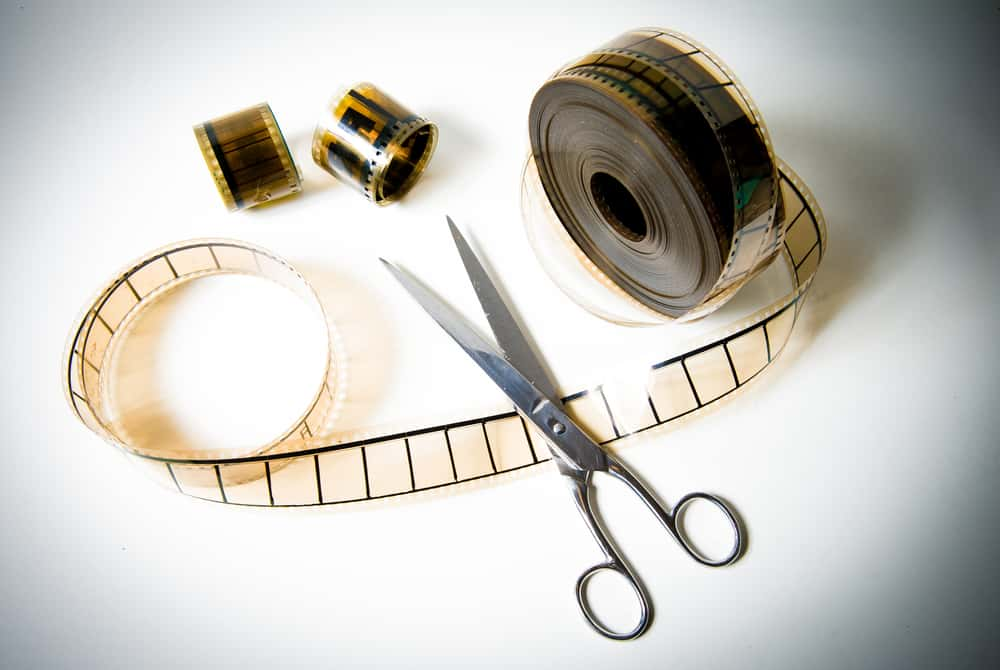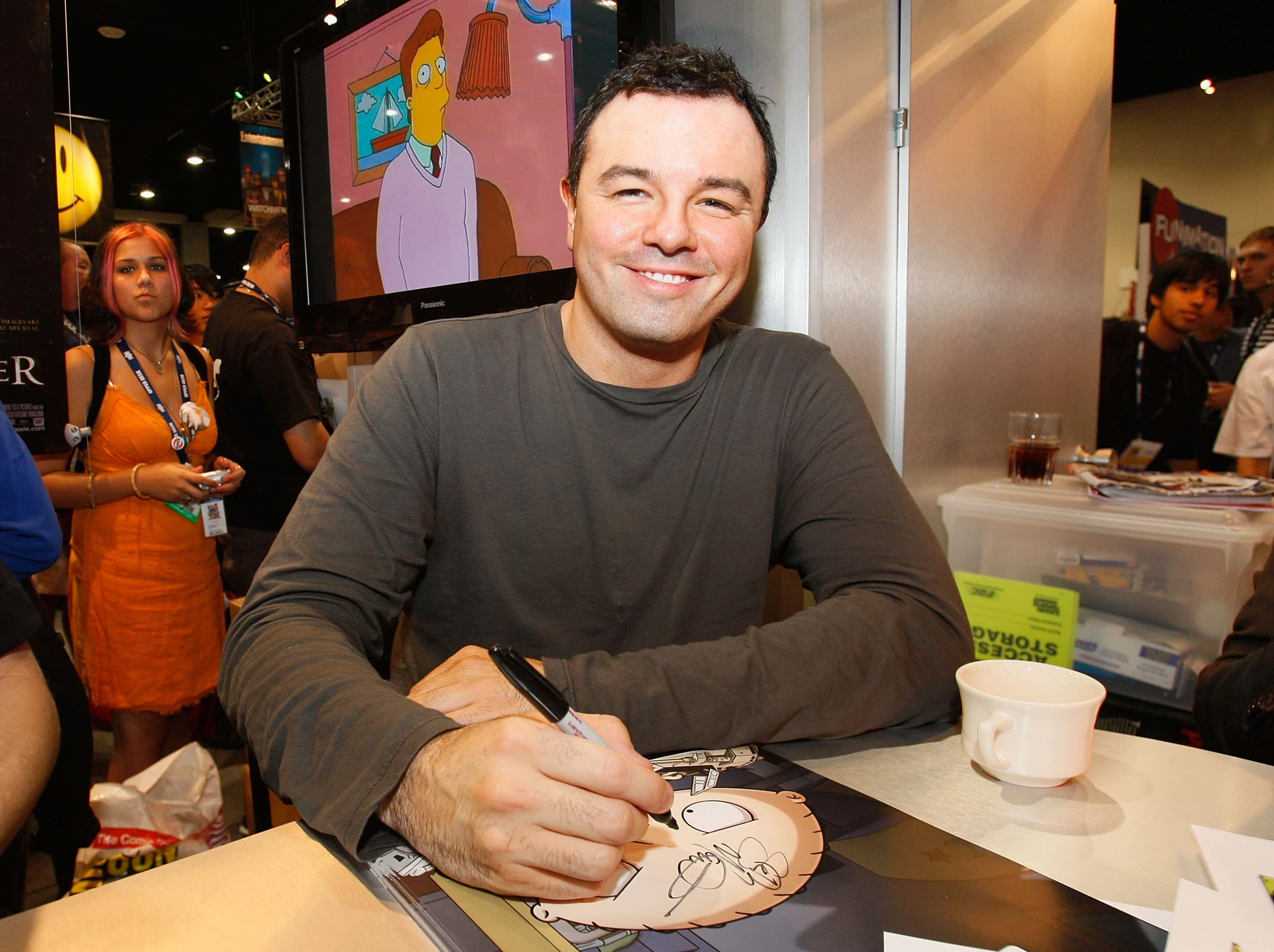90s Cartoons facts90s Cartoons facts90s Cartoons facts“I see now that the circumstances of one’s birth are irrelevant. It is what you do with the gift of life that determines who you are.” – Mewtwo, Pokemon.
“Move it, football head!” – Helga, Hey Arnold!
“You can’t judge how beautiful a girl really is by the way she looks.” – Sailor Moon, Sailor Moon.
Here are some fun facts about 90s cartoons to take you back down Memory Lane.
90s Cartoons facts90s Cartoons facts90s Cartoons facts
90s Cartoons Facts
50. High Praise
Matt Groening, the creator of The Simpsons, stated that he enjoyed Beavis and the other-head (1993) since it shifted the blame off Bart Simpson for being accountable for the degradation of western civilization.
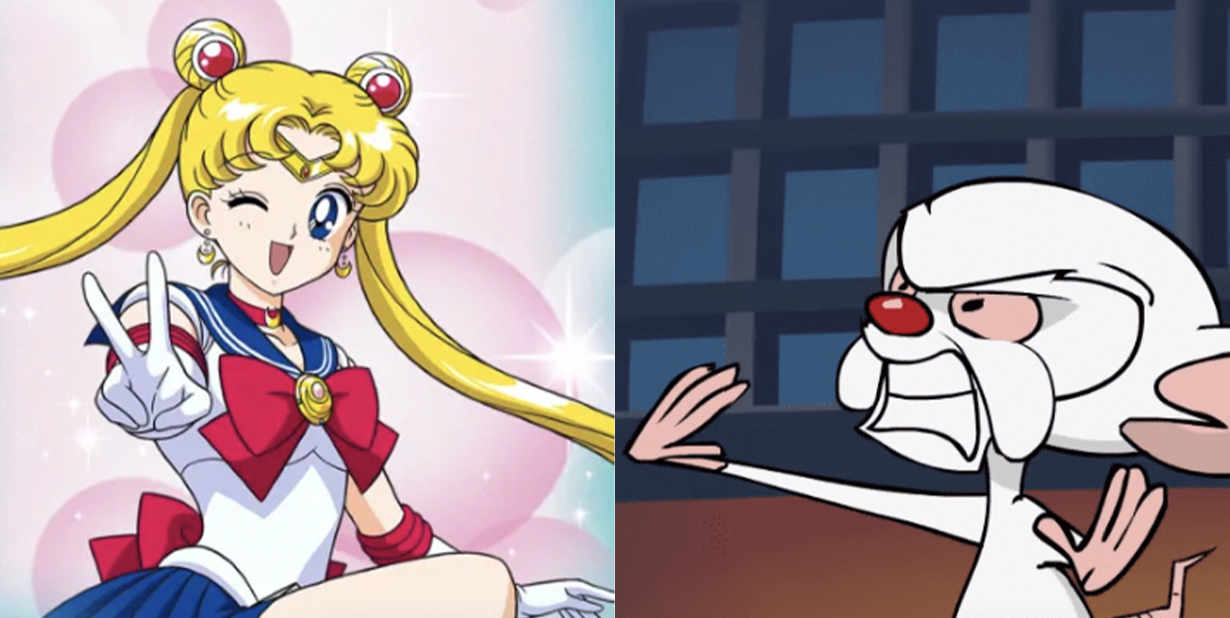
49. Darn it, Meg!
The original voice of Meg in Family Guy (1999), Lacey Chabert, left the show after the first season because of a contract mistake: her contract didn’t make her commit to the full series. She chose to leave after one season and was replaced by Mila Kunis.
 Family Guy, 20th Century Fox Television
Family Guy, 20th Century Fox Television
48. It’s a trap!
The Krusty Krab restaurant in Spongebob Squarepants (1999) is built inside a lobster trap.
 Spongebob Squarepants Nickelodeon
Spongebob Squarepants Nickelodeon
47. Game on!
Mr. Mime, a pokemon featured in the Pokémon (1997) series can in fact be a girl, however the name of the pokemon doesn't actually change. She would still be a Mr. Mime.
46. Sailor Moon 2: Resurrection
In American versions of Sailor Moon (1995), the sequence involving the Sailor Warriors' expiry and revival was edited out. In the original Japanese version, the DD Girls ended their lives. However, in the English dub, this was changed to them being merely "sent back to the Negaverse."
 Sailor Moon With Cloverway International
Sailor Moon With Cloverway International
45. Mean Girls
Craig Bartlett, creator of Hey, Arnold! (1996), based the girls in the show on girls he liked and disliked when he was a kid.
44. The Big Duckiverse
Although the character of Launchpad McQuack originated in DuckTales (1987) and became a sidekick in Darkwing Duck (1991), show creator Tad Stones states that both shows do not share the same universe.
 Darkwing Duck Disney Television Animation
Darkwing Duck Disney Television Animation
43. Short Shorts
From 1995 to 2002, Cartoon Network showcased shorts of up and coming talent on a segment titled What A Cartoon! This segment premiered many iconic cartoons, including The Powerpuff Girls, Dexter's Laboratory, Johnny Bravo, Cow and Chicken, Courage the Cowardly Dog, Codename: Kids Next Door, and Family Guy.
 Family guy pilot episode, 20th Century Fox Television
Family guy pilot episode, 20th Century Fox Television
42. Pretty in Pink
In early designs, Sailor Moon had pink hair.
 Sailor Moon With Cloverway International
Sailor Moon With Cloverway International

Sign up to our newsletter.
History’s most fascinating stories and darkest secrets, delivered to your inbox daily. Making distraction rewarding since 2017.
41. Cut it Out!
When Dragon Ball Z (1996) started to air in the United States, the episodes were heavily edited from the original Japanese show and many of the more controversial episodes weren’t released at all. Of the 67 Japanese episodes, only 53 were released.
40. Powerpuff Replacements
When the news broke that former Cartoon Network hit show Powerpuff Girls (1998) would be rebooted, original voice actors Cathy Cavadini, E.G. Daily and Tara Strong were outraged to learn that their characters were recast. Tara Strong took to Twitter and called the move ‘a stab in the heart’.
 Powerpuff Girls Warner Bros. Television
Powerpuff Girls Warner Bros. Television
39. Oh, Momma…
The show Johnny Bravo (1995) was based of creator Van Partibles’ thesis film, Mess O' Blues (1993), an animated short film about an Elvis impersonator.
38. Anibrainiacs
Pinky and the Brain (1995) have their origins in another Steven Spielberg/Warner Brothers series Animaniacs (1993), where they were featured in a lot of shorts before being spun off into their own show.
 Pinky and the Brain Warner Bros. Animation
Pinky and the Brain Warner Bros. Animation
37. Arson and Head-end
In October 1993, a 5-year-old boy set fire to his Ohio home, resulting in the tragic loss of his 2-year-old sister's life. Their mother alleged that the character, Beavis, from the 1993 television show featuring two adolescent boys, was the cause, given his fire-making tendencies and preference for arson. MTV’s quick response was to only air the show after 10:30pm and to wipe all fire references from all episodes—only fans who taped the early episodes on their VCRs have proof that the word “fire” was ever uttered. “Fire” was banned for the rest of the series’ original run, but it was allowed again in 2011.
36. A Goofy Homage
Goof Troop’s town of Spoonerville was named after J. Michael Spooner, the person in charge of the background layouts for the show.
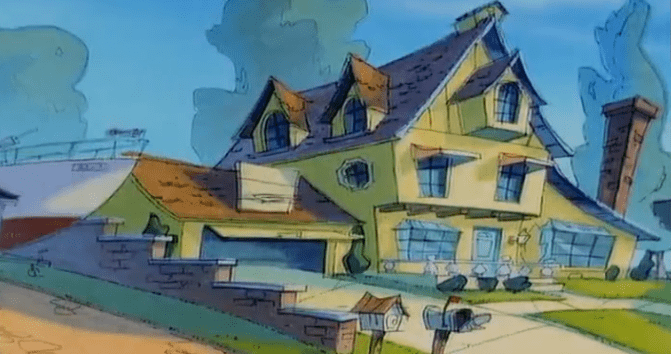 Goof Troop Disney Television Animation
Goof Troop Disney Television Animation
35. Travis the Wallaby
Show creator Joe Murray got inspired for Rocko’s Modern Life (1996) when he saw a kangaroo at the zoo that was oblivious to the chaos around him. The character first starred in a comic strip under the name Travis, but Murray chose the name “Rocko” for the show, because it made the character sound more like a fighter.
 Rocko’s Modern Life Nickelodeon
Rocko’s Modern Life Nickelodeon
34. Lights Out
The final season of Sailor Moon, "Sailor Stars", was never dubbed in America due to American distributor and animation studio DiC losing the licensing rights to Sailor Moon (1995).
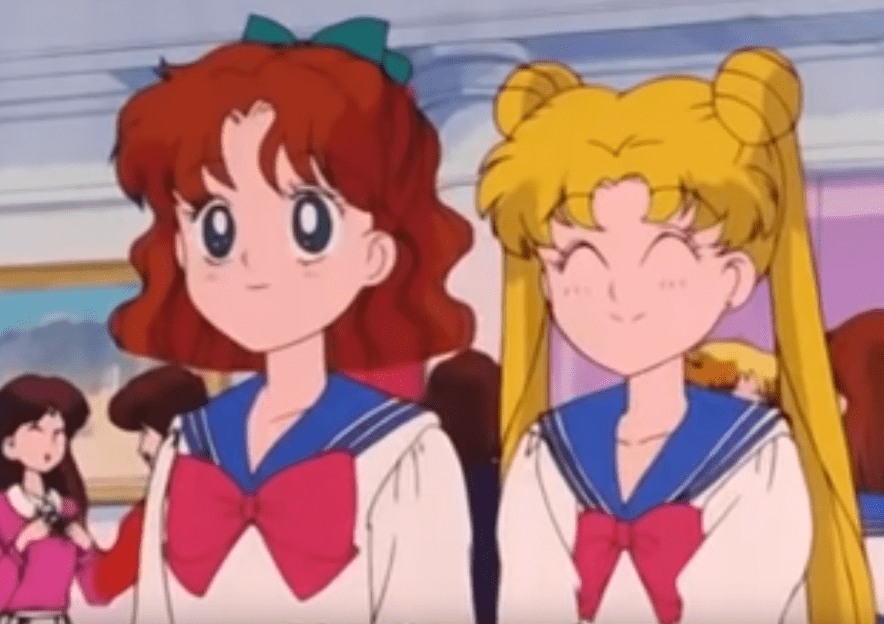 Sailor Moon With Cloverway International
Sailor Moon With Cloverway International
33. Udder Horror
Before David Feiss created Cow and Chicken (1997) for Cartoon Network, he worked as an animator for Hanna-Barbera, working on such shows as The Jetsons and The Smurfs.
32. It Puts the Lotion on its Skin…
Seth Green, who plays Chris in Fox’s Family Guy (1999), auditioned for the role by doing an impression of Jame “Buffalo Bill” Gumb, from the movie Silence of the Lambs.
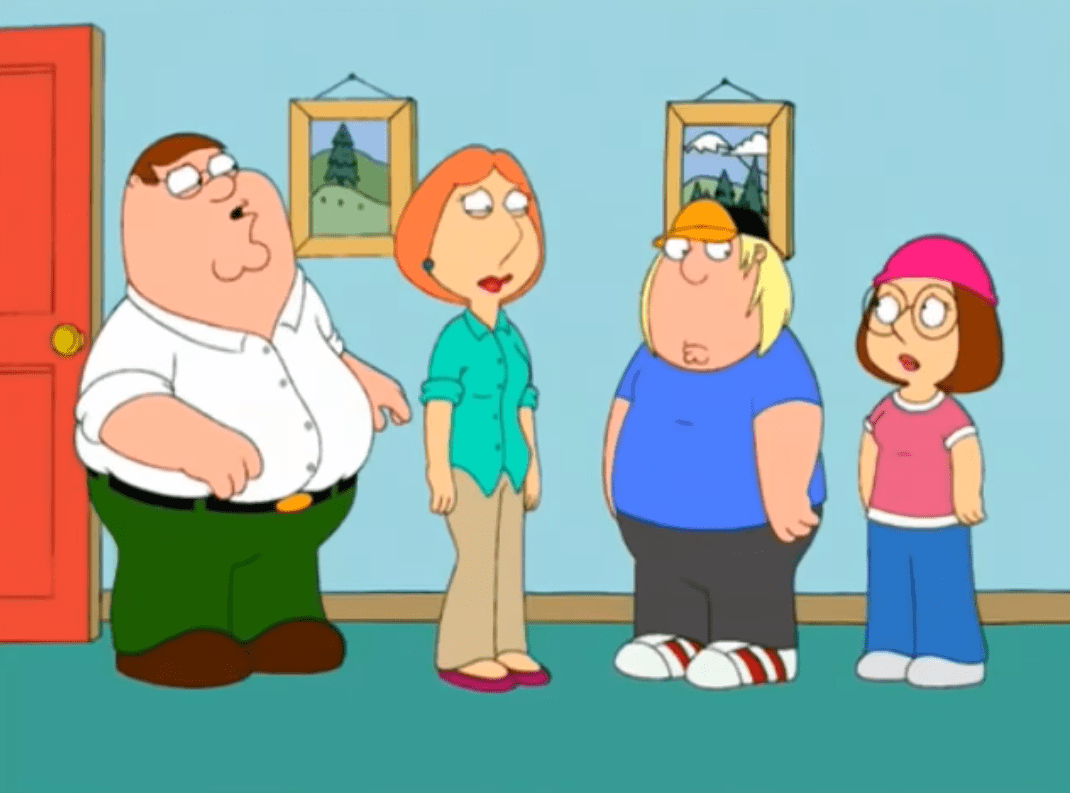 Family Guy, 20th Century Fox Television
Family Guy, 20th Century Fox Television
31. For Real
Environmental awareness show Captain Planet and the Planeteers (1990) became the basis for a real life environmental organization. A percentage of the merchandise earnings were used to set up a fund that still exists to this day.
 Captain Planet and the Planeteers Hanna-Barbera
Captain Planet and the Planeteers Hanna-Barbera
30. Ahead of its Time
ReBoot (1994) was the first half-hour computer animated show ever produced. The show was conceived 14 years earlier in Great Britain by creative collective “The Hub”, but moved to Vancouver to further develop the show. Two members of the group, Ian Pearson and Gavin Blair, were responsible for creating the first CGI music video for the band Dire Straits and their hit “Money For Nothing”.
29. Hands On
According to voice director Andrea Romano, Steven Spielberg had a great hand in the production of Animaniacs (1993). He was producing the show through his own company, Amblin Television, but also came up with plots for episodes, checked the storyboards and visited the recording sessions for the show.
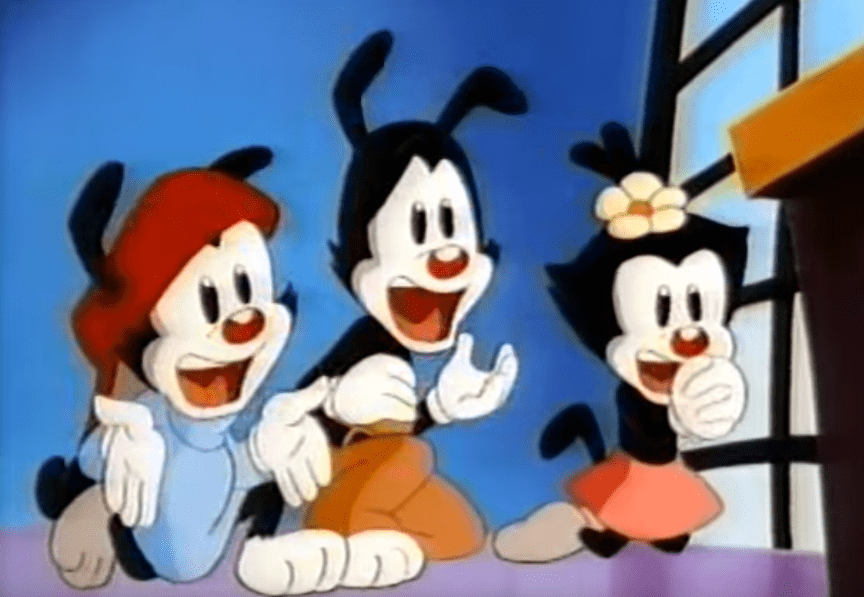 Animaniacs Page semi-protected Amblin Entertainment
Animaniacs Page semi-protected Amblin Entertainment
28. Flipping Busses
To be less confusing to American audiences, most of the scenes that show the Sailor Moon (1995) bus driving were flipped so that they drove on the right side of the road, instead of the Japanese left side.
 Sailor Moon With Cloverway International
Sailor Moon With Cloverway International
27. Couple Project
Classic television animation show Rugrats was developed by the then couple Gábor Csupó and Arlene Klasky, together with Paul Germain in 1989. The couple ran a famous animation studio that provided animation for other studios and was the studio that animated The Simpsons (1989) until 1992.
26. Early Start
Seth McFarlane (Family Guy, American Dad, …) and Butch Hartman (The Fairly OddParents, Danny Phantom) started their animation careers on the show Johnny Bravo (1995).
25. What Geefs?
In the 1950’s Goofy starred in a series of shorts where he lived under the name George Geef, living together with his son Junior. Forty years later Goof Troop (1992) would draw inspiration from this father-son relationship with The Walt Disney Company insisting that b90s Cartoons factsoth families were one and the same.
 Goof Troop Disney Television Animation
Goof Troop Disney Television Animation
24. Quinzell
Batman: The Animated Series (1995) had a lot of source material to draw from past Batman comics and television series. However, the show would create supporting characters that were not considered canon, but would get a huge fan following for years to come. The character Harley Quinn was created as a love interest and sidekick for The Joker, but would branch out into comics and movies long after the animated series had ended.
 Batman: The Animated Series Warner Bros. Animation
Batman: The Animated Series Warner Bros. Animation
23. The Fairest of Them All
Futurama got its name from an exhibit at the 1939 World’s Fair.
22. Take Over the World
It was revealed in the episode “Project B.R.A.I.N.” that the two mice in Pinky and the Brain are a result of a gene-splicing program called B.R.A.I.N., or “Biological Recombinant Algorithmic Intelligence Nexus.”
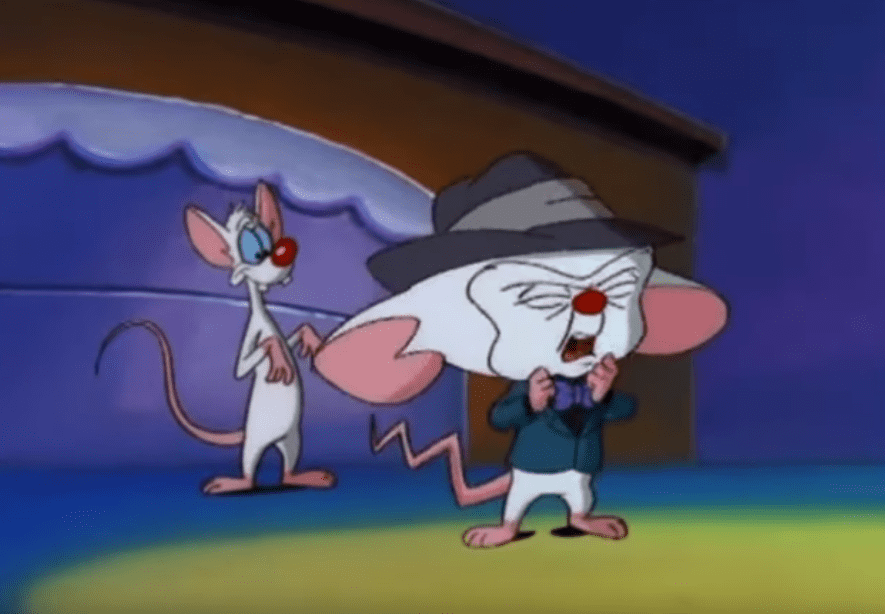 Pinky and the Brain Warner Bros. Animation
Pinky and the Brain Warner Bros. Animation
21. Whoopass Girls!
The Powerpuff Girls were created in 1991, when show creator Craig McCracken drew a birthday card for his brother featuring a mock title card for a fictional show called Whoopass Stew! The Whoopass Girls in: A Sticky Situation.
 Powerpuff Girls Warner Bros. Television
Powerpuff Girls Warner Bros. Television
20. Those Little Wienerheads…
The show Beavis and the other protagonist (1992) generated so many complaints and court cases, that MTV began broadcasting the show only after 11pm, incorporating this disclaimer:
"Beavis and the other character are not real." They are stupid cartoon people completely made up by this Texas guy whom we hardly even know. Beavis and the companion are foolish, crass, insensitive, unattractive, biased against women, and prone to self-harming behavior. Yet, surprisingly, their odd antics manage to amuse us.
19. Booked
Doug (1991) creator Jim Jinkins was originally pitching the character as a children’s book. When publishers showed no interest, Nickelodeon bought the rights to the character.
 Doug Nickelodeon Animation Studio
Doug Nickelodeon Animation Studio
18. Freak Out!
Casting for the lead role of Freakzoid! (1995) was a pain in the behind, as the studio felt none of the actors that auditioned were right for the character. When staff writer Paul Rugg demonstrated the voice during a recording session, he was cast as the lead character, Freakazoid.
 Freakazoid Warner Bros. Animation
Freakazoid Warner Bros. Animation
17. Imagine…
Voice actor Jess Harnell based his voice for Wacko Warner, one of the protagonists of the show Animaniacs (1993), on the voice of John Lennon.
16. Changing stories
Disney’s Bonkers (1993) was temporarily halted halfway through production because of story problems that only became clear after the show returned from overseas animation studios.
 Bonkers Disney Television Animation
Bonkers Disney Television Animation
15. Little sis
Dexter's Laboratory was inspired by one creator Genndy Tartakovsky's drawings of a ballerina. The drawing was a prototype of Deedee and he decided to pair her with a short and blocky opposite, inspired by his own brother.
14. Too old for the bare necessities
The voice of Baloo the Bear in TaleSpin (1990) was supposed to be done by Phil Harris, who performed the character in The Jungle Book (1967). After three sessions, it became clear that the then 85-year-old Harris couldn’t deliver the performance that he did over 35 years earlier. The part went to veteran voice actor Ed Gilbert who also rerecorded Harris’ lines for the first three episodes.
 TaleSpin Disney–ABC Television Group
TaleSpin Disney–ABC Television Group
13. P.C. (Pokémon Correctness)
When Pokémon (1997) director Masamitsu Hidaka was informed that the Pokémon series would be released globally, he was concerned that viewers might perceive Brock Harrison - indeed, that's his last name - as a stereotype associated with specific ethnic groups. As a result, he was partially written out of the first season. When the character received a positive reception, he was written back into the series as a major character.
12. Why so serious?
Bruce Timm was one of the creators of Freakzoid! (1995), but he left the after his proposal for the show to be an action/adventure instead of a comedy series was vetoed by Steven Spielberg.
 Freakazoid Warner Bros. Animation
Freakazoid Warner Bros. Animation
11. No girls allowed!
The original pitch for Rocko’s Modern Life (1996) included a sister for Rocko, but the show’s creator felt the show worked better if Rocko was on his own.
 Rocko’s Modern Life Nickelodeon
Rocko’s Modern Life Nickelodeon
10. The B-show
TaleSpin (1990) was developed in the span of two weeks after a pitch for a series based around the secondary Disney characters called B-Players got turned down. Producer Jymn Magon kept Baloo the Bear from the pitch and built a show around him as a pilot in the 1930’s.
 TaleSpin Disney–ABC Television Group
TaleSpin Disney–ABC Television Group
9. Brand Spankin’ New Doug!
When Nickelodeon held off on the order for the production of the last season of Doug (1991), creator Jim Jinkins tried to sell the property to other studios. Disney took an interest and bought the rights, the trademark and the studio that produced the show.
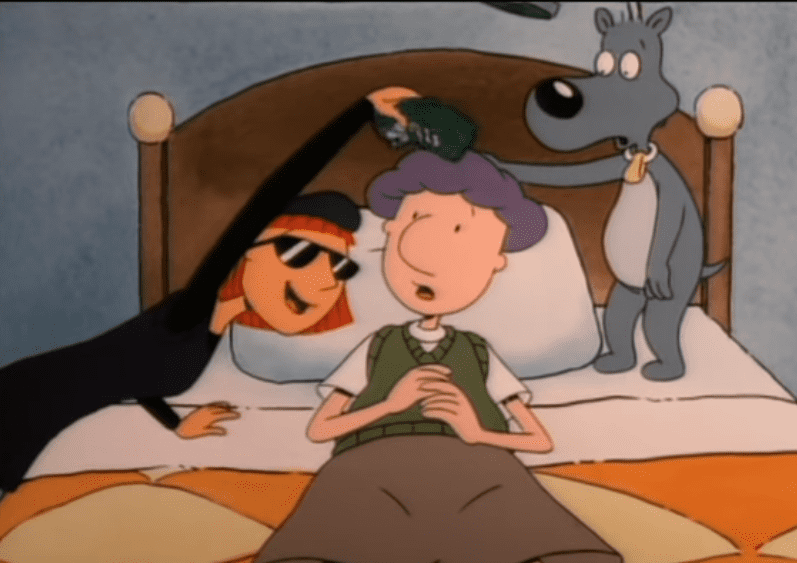 Doug Nickelodeon Animation Studio
Doug Nickelodeon Animation Studio
8. Dramedy
Greg Weisman initially wanted Gargoyles (1994) to be a comedy series, but after a few pitches the show made a more dramatic turn, making it one of the darkest series produced by Disney Television Animation.
 Gargoyles Page Disney Television Animation
Gargoyles Page Disney Television Animation
7. Wiseguy, eh?!?
Voice actor Billy West was already hired to do the voice of Stimpy (from The Ren & Stimpy Show) before the producers knew what the character should’ve sounded like. West and the producers tested a few different voices and settled on a voice that sounded like Larry Fine from The Three Stooges.
 Ren & Stimpy Nickelodeon Animation Studio
Ren & Stimpy Nickelodeon Animation Studio
6. Who lives in a closet, next to a bucket?
The creator of Spongebob Squarepants (1999) originally wanted to call the character “SpongeBoy”, but the name was already copyrighted by a mop company.
 Spongebob Squarepants Nickelodeon
Spongebob Squarepants Nickelodeon
5. Escape from the Playhouse
Arnold from Hey, Arnold! (1996) started out as a supporting character of a series of claymation cutaways called “Penny”, produced for Pee-wee’s Playhouse. When Craig Bartlett tried pitching a few shows for Nickelodeon, he showed a video with a few Penny episodes. The executives liked the Arnold character and asked Bartlett to develop the character into a cel animated show.
4. Delirium
Trey Parker and Matt Stone were so overwhelmed and fatigued while creating South Park: The Movie (1999) that they do not remember producing the sixth episode of the third season, titled "Harassment Panda". To this day, they are still amazed that the writing holds up.
 South Park 20th Television
South Park 20th Television
3. Doggy dues
The tear jerking episode “Jurassic Bark” from Futurama’s fifth season nearly had an even more crushing plot. Instead of Seymour the fossilized dog, the writers intended to have Fry’s mother stuck in the rock. Not wanting to make light of depression, they changed the story to involve a pet instead of a family member.

2. Double-O Down
Darkwing Duck (1991) started out under the name “Double-O Duck”, but Disney had to change because the “Double-O” moniker was owned by EON Productions, who own the rights of the James Bond franchise.
 Darkwing Duck Disney Television Animation
Darkwing Duck Disney Television Animation
1. Vinnie the Shark
Street Sharks (1994) was created to promote a line of toys created by Mattel. When Mattel showed the action figures at the 1994 NY Toy Fair, the toys were presented by a then-unknown actor by the name of Mark Sinclair, now better known as Vin Diesel.
 Street Sharks DIC Entertainment
Street Sharks DIC Entertainment
Sources: 1, 2, 3, 4, 5, 6, 7, 8, 9, 10, 11, 12, 13, 14, 15, 16, 17, 18, 19, 20, 21, 22, 23, 24, 25, 26, 27, 28, 29, 30, 31, 32, 33




